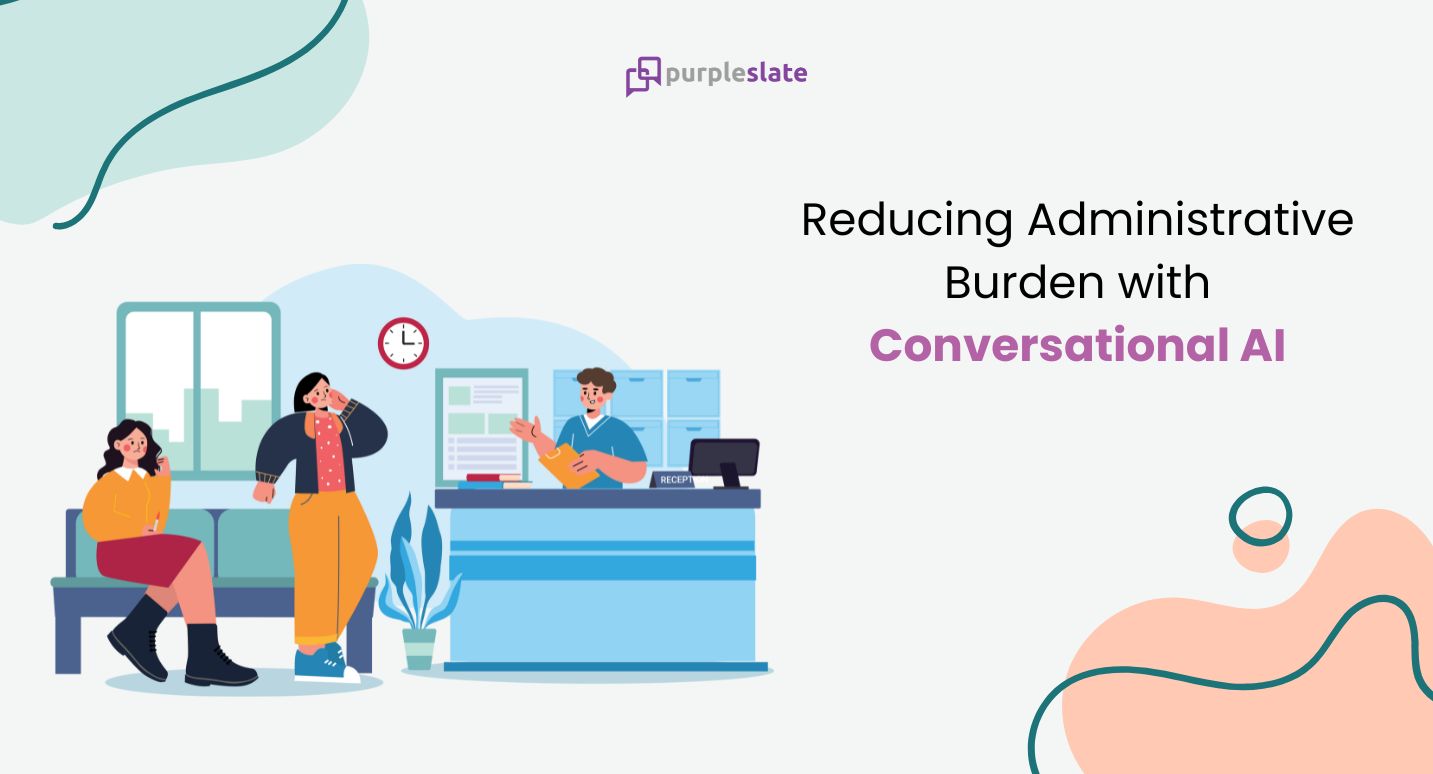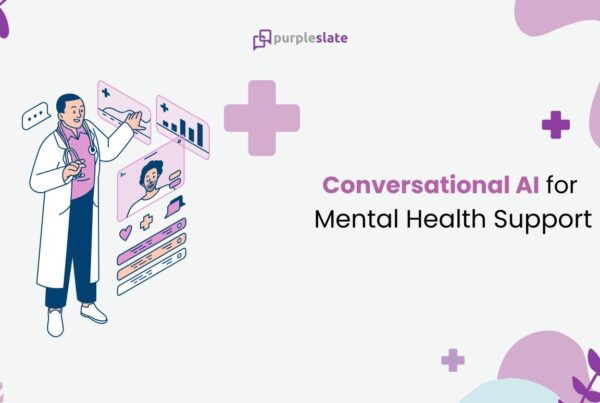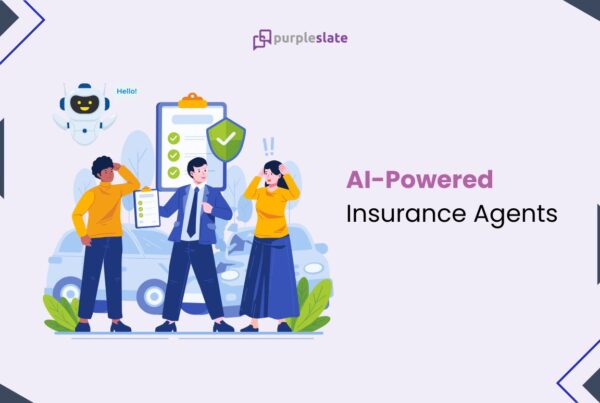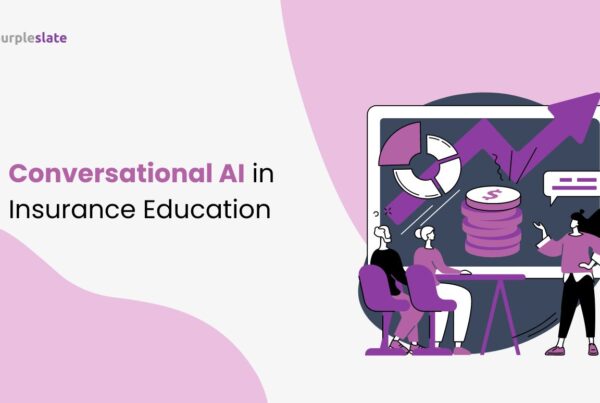
Introduction
Healthcare systems across the globe face an ever-growing administrative burden, creating significant challenges for both medical professionals and administrative staff. Endless paperwork, appointment scheduling, patient inquiries, and data entry often divert time and attention away from what truly matters—patient care. These administrative tasks, though crucial, place overwhelming pressure on healthcare providers, often leading to inefficiencies, burnout, and errors.
With healthcare professionals spending nearly half of their time on administrative duties, the strain on operational workflows has become unsustainable. This constant juggling of administrative responsibilities can result in delayed patient care, dissatisfied patients, and an overburdened workforce. The question arises: how can healthcare organizations reduce this load without compromising efficiency or patient outcomes?
With Conversational AI, you can transform the administrative side of healthcare. By automating routine tasks such as scheduling, patient queries, and documentation, Conversational AI allows healthcare professionals to focus on what they do best: delivering high-quality care. In this blog, we’ll explore how Conversational AI is addressing these challenges and unlocking new possibilities for streamlined healthcare administration.
Streamlining Patient Scheduling and Appointments
One of the most time-consuming administrative tasks in healthcare is appointment scheduling. Traditional methods often involve back-and-forth phone calls, manual entry into scheduling systems, and coordination between patients and providers. This creates bottlenecks and increases the workload on administrative staff.
Conversational AI offers a more efficient way to handle this process. AI-powered virtual assistants can manage appointment scheduling autonomously, engaging with patients through voice or text. These systems can check appointment availability, reschedule if necessary, and send automated reminders to patients. For example, if a patient wants to change their appointment, an AI assistant can handle the request instantly, without the need for human intervention. By streamlining these tasks, healthcare providers can save valuable time and reduce the risk of scheduling errors.
Additionally, AI tools can assist in triaging patients, ensuring that they are scheduled with the appropriate specialist or department based on their symptoms or concerns. This automation doesn’t just alleviate the administrative burden; it also improves the patient experience by reducing waiting times and ensuring seamless communication between patients and healthcare providers.
Managing Patient Queries and Reducing Phone Traffic
Handling patient inquiries is another area where administrative staff often get overwhelmed. Questions about appointment details, billing, insurance, and basic health information can flood phone lines, creating long wait times and reducing staff efficiency. In many cases, these inquiries are routine and repetitive.
Conversational AI is perfectly suited to manage these inquiries, responding in real time to patient questions. AI-driven chatbots can provide answers about billing, insurance coverage, medication refills, and more, all without the need for human intervention. For example, if a patient wants to inquire about their latest bill or insurance claims, AI can guide them through the process, reducing administrative delays.
By automating responses to frequent queries, healthcare organizations can significantly reduce phone traffic, freeing up staff to handle more complex tasks. This not only increases operational efficiency but also enhances patient satisfaction by providing quick and accurate answers to their questions at any time.
Automating Documentation and Data Entry
Documentation and data entry are two of the most labor-intensive tasks in healthcare administration. Every patient interaction generates data that needs to be recorded—whether it’s updating medical records, processing billing information, or documenting treatment plans. Manually entering this information is not only time-consuming but also prone to human error, which can lead to costly mistakes.
Conversational AI provides an intelligent solution to this challenge. AI-powered virtual assistants can transcribe conversations between patients and healthcare providers, automatically entering the data into electronic health records (EHR) systems. This reduces the need for manual data entry and ensures that records are up-to-date in real time. For instance, after a patient’s consultation, an AI assistant can immediately update the patient’s record with details such as symptoms, diagnosis, and prescribed treatments, streamlining the workflow for healthcare professionals.
By automating documentation, healthcare organizations not only save time but also reduce errors in record-keeping, which can have significant implications for both patient safety and billing accuracy. Additionally, healthcare providers can spend less time on paperwork and more time focusing on direct patient care, improving the overall quality of service.
Enhancing Workflow Efficiency in Hospitals and Clinics
In busy healthcare environments, managing workflows efficiently is essential. From guiding patients to the right departments to processing insurance claims, administrative tasks can easily become overwhelming, leading to delays and operational bottlenecks.
Conversational AI plays a pivotal role in improving workflow efficiency by taking over routine, non-clinical tasks. AI chatbots can direct patients to the appropriate department or service, reducing wait times and improving the flow of patients through clinics and hospitals. Whether it’s managing check-ins, answering questions about available services, or guiding patients to labs for tests, AI systems can act as virtual guides, freeing up administrative staff to focus on more complex tasks.
Moreover, AI-driven systems can assist in insurance processing by checking patient eligibility, submitting claims, and following up with insurance companies. This reduces administrative delays and ensures that billing is handled promptly and accurately. By automating these tasks, hospitals and clinics can optimize their operational workflows, leading to better resource allocation and improved patient outcomes.
Ensuring Compliance and Reducing Errors
In healthcare, compliance with regulations is paramount. From maintaining patient privacy (HIPAA in the U.S.) to ensuring accurate billing, the risk of non-compliance can lead to financial penalties and legal issues. One of the challenges that healthcare organizations face is maintaining accurate, compliant records while managing an overwhelming volume of data.
Conversational AI offers a solution by minimizing human errors and ensuring that processes adhere to compliance standards. For instance, AI can automate documentation and billing in accordance with industry standards, reducing the risk of misfiling or coding errors. AI assistants can also prompt staff to ensure that certain protocols are followed, such as obtaining patient consent before data is shared or used.
By incorporating AI into administrative workflows, healthcare providers can streamline compliance-related tasks, reducing administrative burden and minimizing the risks associated with human error. This shift not only helps protect patient data but also ensures that healthcare organizations avoid costly mistakes that could arise from non-compliance.
Conclusion: The Future of Conversational AI in Healthcare Administration
Conversational AI is rapidly transforming how healthcare organizations manage their administrative operations. By automating appointment scheduling, patient inquiries, data entry, and compliance tasks, healthcare providers can significantly reduce the administrative burden that often detracts from patient care. As AI technology continues to evolve, we can expect even more innovative applications that will enhance operational efficiency and improve patient satisfaction.
For healthcare organizations looking to adopt AI-driven solutions, the benefits are clear: less time spent on paperwork, fewer errors in data handling, and a more streamlined workflow overall. purpleSlate, as a pioneer in Conversational AI solutions, is helping healthcare providers integrate these technologies seamlessly into their administrative operations, allowing them to focus on what truly matters—delivering high-quality care to patients.




